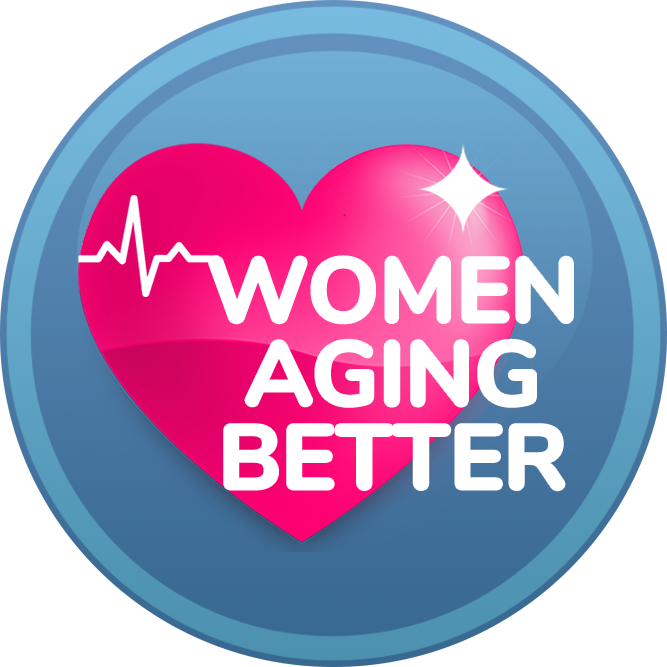What Cross Training is and Why it Matters
If you read my posts with regularity, you know that I am a strong advocate of the idea that ANY WORKOUT IS A GOOD WORKOUT. This post addresses some of the issues that can arise if we always do the same workout, however.
Cross Training is about adding variety to your workouts to stay strong and flexible while avoiding injuries.
Optimal Fitness includes 3 components, each of which need to be addressed every week if we really want to stay healthy as we age. These include:
Strength Training - e.g., lifting weights, using resistance bands, or using our body weight to build stronger muscles
Cardiovascular Training - e.g., walking or biking, using any type of cardio equipment in a gym, or any activity that gets your heart rate up consistently for a period of time
Flexibility Training - e.g., any type of dynamic or static stretching to lengthen muscles, foam rolling, self or assisted massage or other body work
If we do the same exact strength, cardio, and/or flexibility workouts every week with no variation, we put ourselves at risk for overuse injuries and worse-case scenario, the need for body part replacements (e.g., hip, knee, shoulder replacement).
There are many women who work out regularly and are seemingly healthy but have required surgeries because there wasn’t enough variation in their workouts. For example:
One woman required a hip replacement after years of only using the elliptical every morning for an hour
Another required a shoulder replacement after years of excessive push ups and burpees, and
Countless runners have needed knee replacements (partly from overuse injuries and also from lack of strength and flexibility in the leg muscles that are not directly used for running)
So what can you do about it without making your life more complicated? Simply add a little more variety to whatever you’re doing. Here are some concrete examples.
Strength Workouts
If you like your routine, keep it but vary the number of repetitions you do as well as the amount of weight you lift. For example, on week 1 do 20 reps with relatively light weights, week 2 do 15 reps with medium heavy weights and week 3 do 8 - 12 reps with your heavy weights.
If you’re open to varying your workouts, do different exercises each week and/or “play with” different equipment, e.g., medicine balls, bands, kettlebells, punching bag, etc.
Cardio
Every cardiovascular exercise can improve the quality of your health, but they also can put you at risk of injury if you have poor form or do too much. For example:
Walking (or jogging) is a great option because it’s a full body movement that includes gently “pounding” your feet into the ground repeatedly, which helps increase bone density. If you struggle with good walking form however, you may suffer from shin splints, tight calf muscles, knee or hip pain, or a sore back.
Water-based cardio helps to eliminate any impact on our joints while strengthening our muscles using water resistance. Deep water aerobics can be especially useful. Swimming is also good but can result in shoulder issues if overused.
Rowing is a full body cardio strength movement that can be an excellent option (when done properly) and can result in a variety of injuries if you don’t know how to row properly to protect your back, neck and shoulders.
Biking is used regularly for knee and hip rehab because it’s a non-impactful way to get your heart rate up. The only issue with biking is that you’re sitting more and most of us do way too much sitting all day long.
There are countless other forms of cardio. If you love one, make it your primary “go to” movement but try to get other movements in as well, e.g., Mon walk, Tues walk, Wed stationary bike, Thurs walk, Fri swim, Sat walk, Sun Zumba.
Flexibility
If you don’t stretch enough right now, consider adding a stretching routine to your daily activities and don’t worry about variation yet.
You can access a dynamic warm up video I made when starting my fitness business that I still use today. It will help loosen your overall body and can be done daily.
Foam rolling is also an excellent way to loosen fascial tissue that connects to our muscles and bones. When we’re feeling really stiff or tight, the softest foam roller tends to work best. If you want ideas, I’ve included a foam rolling video.
Static stretching (holding a stretch for 30 seconds of longer) is another great way to increase flexibility. If a stretch feels good to you, it’s a good stretch.
Restorative yoga classes are a great way to lengthen tight muscles because you will be resting in your stretching poses for longer periods of time.
Action Steps:
Most important step - do not try to do everything. If you’re not strength training, doing cardio or stretching regularly right now, add in one day of each activity per week to start. Expand from there once you’re consistent.
If you are consistent with all 3 components, think about how you can be more versatile with your training. Could you take a new class or mix up your workout routine in a different way? Then do it!
Don’t overthink it. Just keep moving and stretching and try to have some fun with it all. Working out with friends can make it easier or showing up for your trainer keeps you accountable. Do what works for you!

